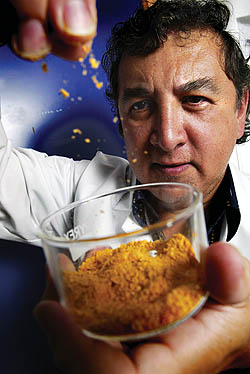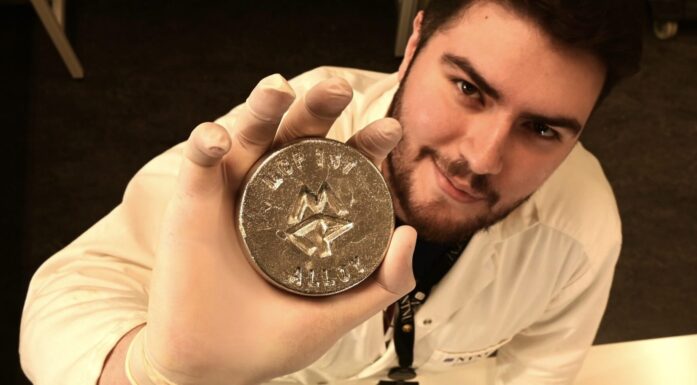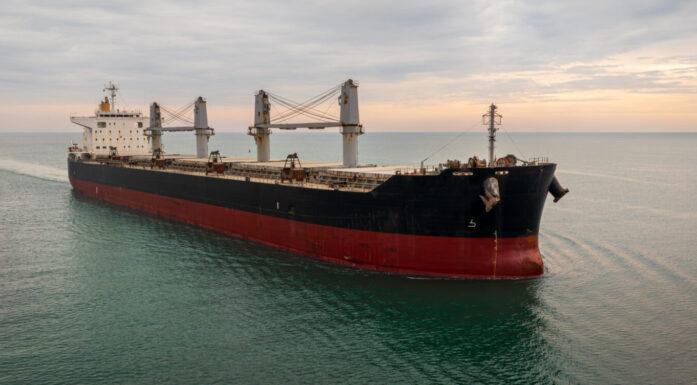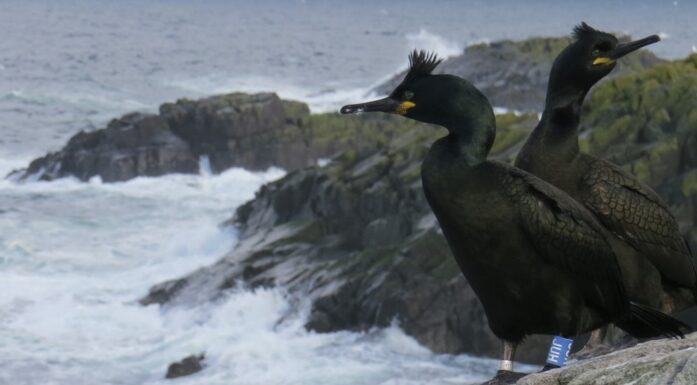Making food from water
Invisible but invaluable: raised in steel tanks, a tiny marine creature is capable of producing Omega-3 fat, a product in great demand.
“To put it very simply, you could say that we are trying to produce fish feed and dietary supplements from seawater”, says SINTEF’s Jose Rainuzzo. More precisely, the Peruvian scientist and his colleagues are exploring the properties of a micro-organism that lives everywhere in the ocean. The organism,Thaustrochytrids, has characteristics that place it on the boundary of the plant and animal kingdoms. SINTEF scientists believe that it could be a possible source of Omega-3 fat for aquaculture and for the health-food industry.
FATTY ACID IN DEMAND
In laboratory tanks in Trondheim, these unicellular creatures are being cultivated on a diet that consists of mostly sugar and salt. After five or six days in the culture tank, they are full of the fatty acid known as DHA (docosahexaenoic acid). DHA fat is important in the diet of both babies and fish fry. It is incorporated in feed for young fish and is added to baby food. Many people are also willing to pay well for DHA in capsules from health-food shops.
ALTERNATIVE TO FISH OIL?
Much of the demand for DHA fat is currently met by fish oil. But the world’s fisheries are in crisis, having reached the ecosystem’s limits, so the level of production of fish oil is unlikely to rise in the future. According to Rainuzzo, therefore, microorganisms could be useful supplementary sources of fat. Although it is much more expensive to extract fat from such sources than from fish, the tiny organisms in SINTEF’s tanks have a much higher content of DHA than fish oil.
TEST-TUBES IN HOLIDAY LUGGAGE
Research into raising and exploiting these tiny fat factories has been carried out with financial support from the Research Council of Norway. Rainuzzo is a marine biochemist, and is collaborating with biotechnology groups at NTNU and SINTEF, led by Professor Arne Strøm and research scientist Inga Marie Aasen.
Thaustrochytrids lives everywhere there is saltwater, not just in the sea, but even between the grains of sand on the beach. When the project was started, the $64,000 question was ‘Where can we find strains that grow rapidly and produce large amounts of DHA?’ People from Aasen’s group who vacationed on the coast brought samples of seawater and beach sand home with them. With this material, SINTEF scientists and research fellow Anita Nordeng at NTNU were able to home in on two strains of the organism: one from somewhere in the Atlantic and the other from the coast of southern Norway. For the last several years, the team has been developing methods of cultivation that produce high concentrations of cells in the tanks, high fat content in the cells, and a high proportion of DHA in the fat.
FROM MEAL TO OIL
So far, the Trondheim scientists have made a kind of flour from the micro-organisms. Rainuzzo has successfully fed the flour to rotifers, a type of zooplankton used to feed cod and halibut fry. When the rotifers eat the flour, they absorb the valuable fat and in turn make it available to the fry. Rainuzzo has also fed the flour directly to cod fry along with rotifers, and has seen the fry eat the flour. SINTEF has recently applied to the Research Council for funding for the next stage: designing a process for extracting fat from the micro-organisms in the form of oil, leaving the flour as a by-product. “If we want to build up an industry from this process, producing oil will be decisive,” according to Rainuzzo.
HIGH PRICE
Two plants in the USA are currently producing Omega-3 from marine micro-organisms. One of them produces oil,which it sells to manufacturers of baby food for $250 per kilo. Rainuzzo envisions a Norwegian plant that would sell oil to the health food industry and to fish food manufacturers, along with flour to fish-fry producers in the aquaculture industry. Currently, large quantities of fish oil are used as an additive in feeds for adult fish. Rainuzzo thinks there could be an alternative for this market: a mix of expensive microorganism- produced oil, rich in DHA, combined with low-DHA oil from vegetable sources.
“If the aquaculture industry is to grow, sooner or later there will not be enough fish oil for feedstuffs. When that happens, alternative oils with DHA fat could become big business,” he says.
Svein Tønseth





